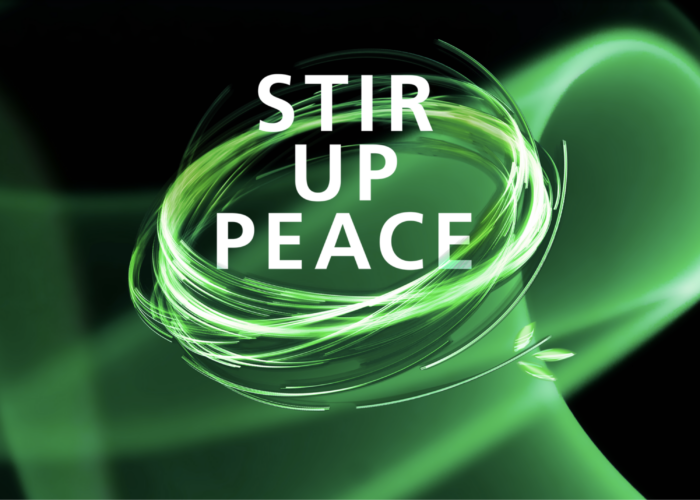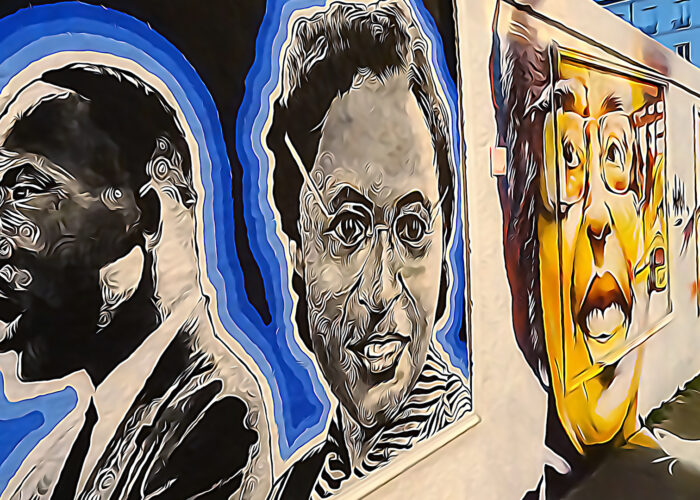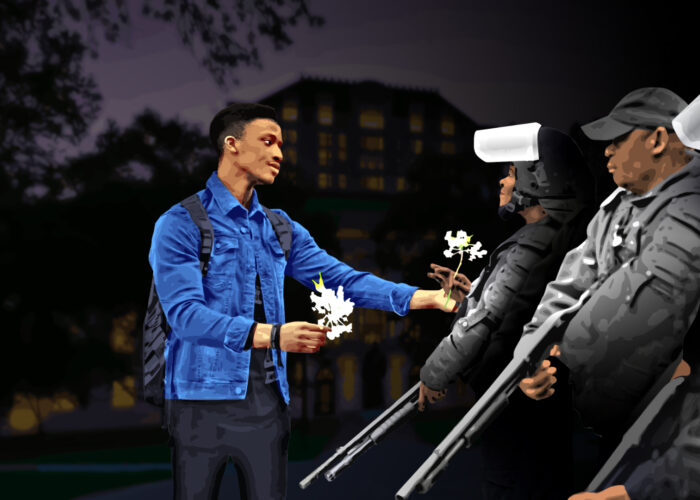Episode 1: Seeking God’s Kingdom
Study guide
This guide is intended to help facilitate a fruitful conversation between viewers of the Stir Up Peace videos in a group setting. While you can watch these videos by yourself, there are advantages to watching them with others (e.g., in a Sunday School class or a small group). Community can help keep us motivated, supported and accountable.
There are a variety of reasons a person may become motivated to engage in nonviolent direct action — humanitarian values, a passion for righting wrongs or a desire to work for the common good, to name a few. In this series, we reflect on what an Anabaptist understanding of following Jesus’ teachings can teach us about why and how we engage in nonviolent direct action.
Regardless of what motivates people to show up, you can work together.
Each video has a corresponding section of the study guide containing:
- Focus statement/synopsis.
- Scripture.
- Opening ritual.
- Group discussion featuring an activity and discussion questions for both small groups/partners and for large groups.
- Prayer.
We suggest ending in prayer, by first offering a time for prayer requests. In addition to your group’s prayer requests, add a prayer for those on the frontlines, who are struggling for positive social change, and for more people to join them.
We suggest watching the videos in consecutive order and at least twice, so that study participants can absorb the materials more deeply. If closed captions are available on your video settings, consider turning those on, as well, to increase accessibility.
Use the elements provided for each video that are most helpful and applicable to your context. If your group is interested in engaging in further discussion about peace and justice,
contact Mennonite Mission Network.
Focus statement/synopsis:
Jesus exemplified living a life of non-violence, in both spirit and substance. Non-violent direct action is one aspect of nonviolence, which is different from typical political actions, such as voting.
Following Jesus means seeking God’s kingdom and righteousness. But we can’t use violence to do it. Committing to seek out nonviolent change takes deep love, creativity and faithfulness.
We believe that participating in nonviolent direct action is a faithful way of following Jesus. It’s a journey that can transform a person’s faith, even as they seek to transform the world.
Scripture:
Read
Isaiah 58.
Opening ritual:
Complete ten rounds of “square breathing,” which activates the parasympathetic nervous system. Conclude with a prayer.
Square breathing is:
Four seconds inhale deeply from the belly.
Four seconds hold.
Four seconds exhale from the belly.
Four seconds hold.
(Repeat.)
Group discussion:
This video describes nonviolent direct action as “a strategic response to violence, oppression and injustice that favors tactics that don’t depend on physical force or the threat of violence, in order to achieve collective goals.” This may not initially seem like a spiritual practice, but many have found inspiration and a calling from the Christian tradition to participate in nonviolent direct action.
Reducing violence and providing space for our societies to heal matters to God! Throughout the biblical text, in the Prophets, Gospels and stories of the early church, we learn that God is concerned about earth’s wellbeing and mandates that humanity care for the most vulnerable. Using nonviolent direct action to challenge societal harms in the place you live is faith-filled discipleship work. It is an important way to seek God’s kingdom, and it builds on the various ways you already live out your faith.
Pleas from around the world call for people of faith to bring their spirituality to the frontlines of the nonviolent struggle and effect positive social change. We pray that your love will deepen, your comfort zone will stretch, and your progress further on your faith journey.
Activity:
Introduce yourself to one another using the following prompt. Though you may know a lot about one another, this introduction, created by Vincent Harding, a Black Mennonite activist and confidant of Martin Luther King Jr., helps us understand with our lineage. (It is also short, sweet and to the point). Each person answers four questions:
- What is your name?
- Where were you born?
- What is your mama’s mama’s name?
- Where was she born?
Many nonviolent direct action meetings start with this kind of introduction to help people feel seen, acknowledge the ancestors that may have helped them become who they are today, and learn something unique about each person.
Small group/partner discussion questions:
- What do you hope to learn from this video series?
- What questions do you have about nonviolent direct action? Have one person record everyone’s questions. At the end of the video series, see how many of these questions have been answered and how many remain.
Large group discussion questions:
Review the definition of nonviolent direct action again. How does this connect to your understanding of the Mennonite witness?
In the video, Sarah said, “Nonviolent direct action can range from de-escalating harassment to disrupting harmful corporate activities. It can focus on economic, cultural or political decision-makers and always keeps in mind public perception. It can be practical, directly addressing oppression, or symbolic, to dramatize the impacts of oppression.”
- Who in your group has been a part of a nonviolent direct action? Share your experiences together as a group. (Be mindful of time, so that everyone can share.)
- Were these examples of symbolic or practical nonviolent direct action? (The video suggests that practical nonviolent direct action directly addressed and mitigated the oppression. A symbolic action dramatizes the impact of the oppression, so that the oppression can no longer be ignored by the public. Symbolic actions are addressed specifically to decision-makers, who are in positions of power.) Examples of a practical nonviolent direct action include: liberating animals from a factory farm and tree-sits to prevent logging. Examples of symbolic nonviolent direct actions include: die-ins representing the consequences of disparity in healthcare access and spilling biodegradable red paint on the entrance steps of a drone factory or sharing the stories of people considered “collateral damage” in war, with workers entering the facilities.
Close in prayer.



